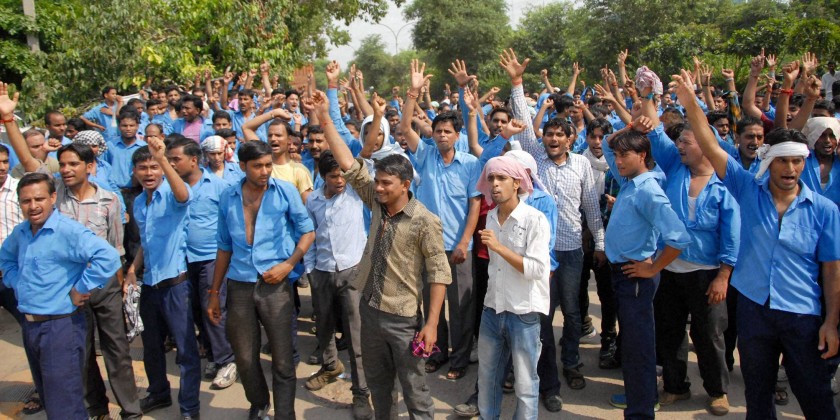
Job Creation in India, Opportunities and Challenges
In what was seen to be a major boost to job creation, Foxconn, world leader in manufacturing electronic components, had recently committed to invest US$5 billion in Maharashtra. Foxconn, as a key part of its “Industry 4.0” smart manufacturing plan, had said that it would build its manufacturing facility in Maharashtra. Speaking on Foxcoon Maharashtra CM Devendra Fadnavis had then said: “The investment will not only generate 50,000 jobs, it will create a positive climate for investment.”
With rising labour costs in China, Foxconn’s current operational base, it was only natural for the Taiwanese multinational to channelize its investments to India, where the Modi government is actively engaged in building business and manufacturing friendly conditions, including Labour reforms.
But is one Foxconn enough – what will it take to realize the Modi mantra of Jobs, Jobs and more Jobs ?
Large factories a rarity in India:
The scale of Foxconn’s investments is remarkable, as large factories have become rare in India. Factories employing more than 1,000 workers today engage a smaller share of India’s organized industrial workforce as compared to what they did, three decades ago.
Nagaraj, Economics professor at Indira Gandhi Institute of Development Research, attributes the decline in average number of workers employed by Indian factories to the practice of outsourcing gaining momentum in the Indian economy.
An article in the Mint analyses data on organized manufacturing employment published by the Annual Survey of Industries (ASI), revealing significant increase in the share of mid-size factories in total industrial employment with only a marginal increase in the share of small factories, as seen in the chart below.

New challenges in the job market:
Another significant change in India’s industrial evolution has been the shift away from labor-intensive manufacturing units to capital-intensive ones which diminishes the job-generating potential of new industrial units in the present context.
For example, after a decade-long boom which had attracted many daily wage workers and labourers from rural India, creating one in every three new jobs, India’s construction sector is undergoing a slowdown.
An article published in Moneycontrol states that more than half a million workers were let go from construction sites around India’s capital in the last 18 months. It quotes chief economist at Knight Frank India Samantak Das: “The slowdown in the construction sector is very, very depressing which will have a negative impact on the overall GDP growth numbers in the first quarter of the current fiscal year.”
Another factor contributing to the slowdown is a law to clamp down on “black money” flows that fund as much as a third of real estate deals.
Economists say that lower interest rates and a government splurge on infrastructure should eventually help revive construction, which contributes a tenth of Indian GDP.
Sectors suitable for job-creation:
Currently, formal manufacturing and modern services like financial intermediation and communications are the two high-productivity sectors that can contribute to boosting the job market. The manufacturing sector can employ low-skilled workers that India has in abundance, and also has higher employment elasticity of growth-the rate of employment generation as it grows.
An article in the Mint mentions a simulation done to estimate the impact on the Indian economy if the Narendra Modi government succeeded in creating a formal manufacturing-friendly environment.
“The simulation found that 58 million new jobs could be created in the formal manufacturing sector in the next 20 years above what we would have with status quo policies.
This scenario would produce corollary benefits for the construction and utilities, modern services and traditional service sectors as well, creating a further 84 million new jobs in those sectors by 2035.
Altogether, India would finally meet the oft-repeated need for 10 million new jobs each year.”
Please confirm If you want to unregister
You have been unregistered from gradlink







